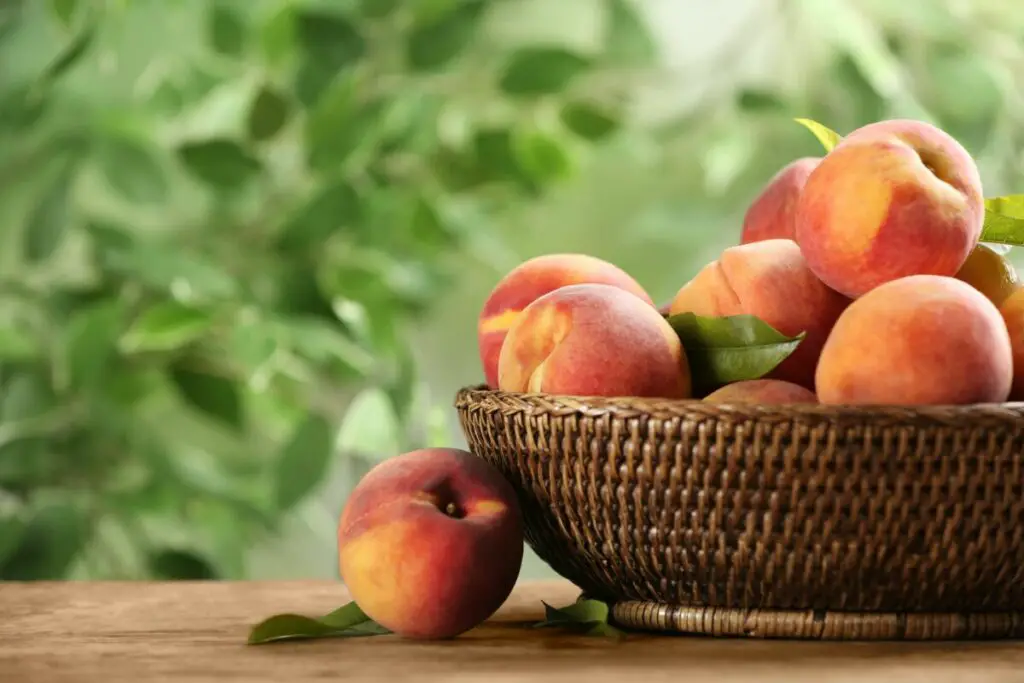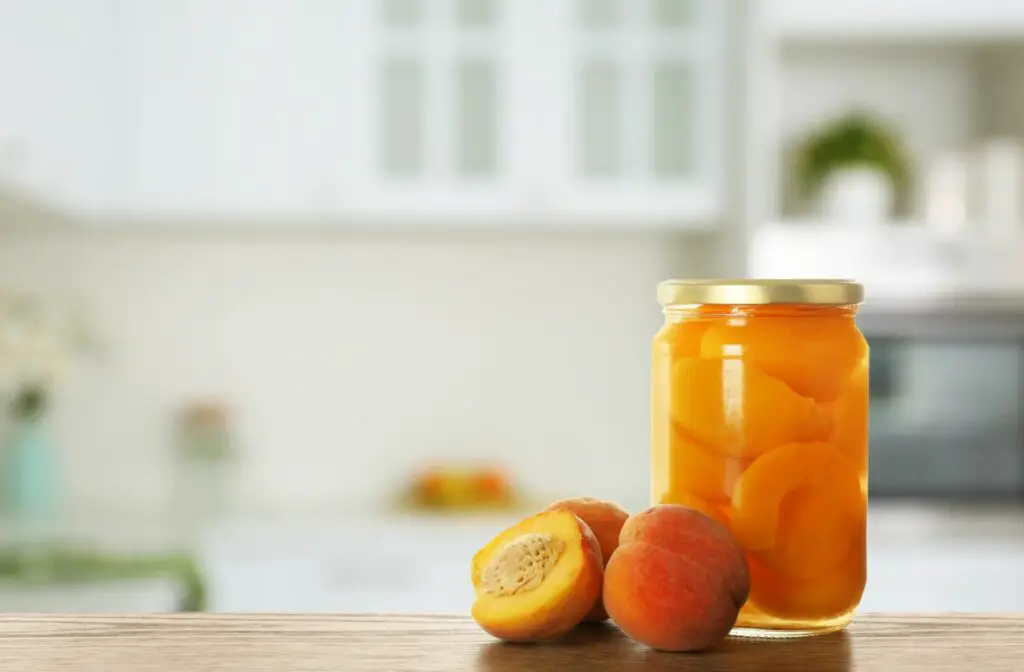
You may not have known this, but tasteless peaches are actually pretty common, even though it is disappointing to eat a tasteless peach. It all boils down to a few key factors that are easily preventable. So, what makes peaches tasteless?
The most common reason for tasteless peaches is that they haven’t been kept properly. Keep peaches below 36 degrees Fahrenheit to keep them fresh. If that wasn’t the problem, it could be that the peaches were not handled well or they were not ripe. They also may have been grown improperly.
Keep reading to find out how you can keep your peaches fresh and delicious. It can take some work and precision, but it’s worth it in the end for the amazing, juicy fruit.
Why are my Peaches Tasteless?
There is a multitude of reasons why you’re peaches could be lacking flavor. Here are 5 of the most common.
- The peaches are kept at incorrect temperatures. This is the most common reason why peaches can sometimes be tasteless. Many don’t know this but they need to be kept at a certain temperature in order to stay flavourful. Anywhere from 36 to 50 degrees Fahrenheit will kill peaches. They need to be kept above or below this temperature range, otherwise, they will start decaying and going bad. If you are transporting them over long distances, they will need to be kept a lot colder: below 36 degrees Fahrenheit. After purchasing or picking peaches, make sure to keep them out of the fridge.
- The peaches are not fully ripe. Picking a perfectly ripe peach can be hard, especially if you’re new to it. Most people pick out peaches as if they were an apple, so they go for size, shape, and smoothness. But peaches are not like apples. A ripe peach will be soft, not hard, and will have a strong smell. It should be red and golden without any green. If you think the peach you picked isn’t fully ripe, leave it in a paper bag for a few days.
- Peaches have not been handled well. Peaches are very soft and delicate fruits and need to be handled with care. A lot of big companies that supply grocery stores are rough when transporting their peaches. Then they place them in the cold section, where they go bad because they’re not kept at the right temperature. This obviously isn’t your fault, so I recommend buying peaches from local farmers. They know how to take care of their peaches. Or you could even go and pick some yourself.
- Peaches have been grown for physical appearance and not taste. As I mentioned earlier, a lot of people pick peaches like apples, and corporations are aware of this. They target those people. Soft and smaller peaches are often forgotten about even though they’re tasty and ripe. Suppliers will change the way their peaches look so that more of them sell.
- The peach tree was grown in bad conditions. Peach trees are actually subtropical plants, so they do best in warmer temperatures. If you live in a colder area, peaches will still grow, but they won’t taste very good. Other factors like soil and watering also will influence the taste of your peaches. Consider planting multiple peach trees to encourage cross-pollination and healthier fruits.
How to Pick a Good Peach
There is a lot that goes into picking a good peach. Before you even pick your peach, it goes through planters, handlers, and retail stores. I recommend visiting local farmers and stands to guarantee the peach has been grown in a good environment and without pesticides. Some retailers also grow them for looks and not taste. A lot of people think that the largest, most colorful, and hardest peaches are the best, but that is not the case
Ripe peaches are soft to the touch and will have a slight indent when you touch them. A great tip that I just learned about is smelling your peaches. Ripe peaches are very strong smelling, so you’ll know when it’s ripe if you can smell the peaches really well.
You can also determine the ripeness of your peaches based on color, as they will be a dark yellow color and there shouldn’t be any green. If you do happen to grab an unripe peach at the store, you can store it in a dark place for a few days until it ripens. Make sure not to put them in the fridge, otherwise, they’ll go bad.
Preservation of Peaches

In order to keep your ripe peaches perfect, you need to take care of them after you purchase them. There are many ways to save peaches like canning, jamming, or freezing. Before preserving peaches, make sure they’re ripe. If you follow the tips above, this step should be a breeze.
Freeze
The best way to preserve peaches is by freezing them. This will trap in flavor and keep them fresh for months. Cut and peel the peaches, then place them in a ziplock bag with a little sugar and lemon.
Can
Canning peaches is the next most popular method. This way, you can enjoy seasonal fruits whenever you want. This method is a little more work than others, but it has great results. You’ll want a canner, lots of jars, and a pot.
First, put the jars in the dishwasher and run it. You want the jars to be hot, and the dishwasher is the best way to do that. While that’s going, boil some water in a pot to blanch the peaches. That will make them easier to peel. Peel and halve the peaches, then add the halves to the jars with the canning syrup, close the jars, and put them in the canner to process.
Canned peaches can be used for anything from dessert to salads, to drinks. There are a lot of canned peach recipes online.
Jelly
You can also make jams and jellies out of peaches. These take the peach out of its original and natural form, but the product will still be delicious and can be used for just about anything. Be sure the peaches are ripe to guarantee the best-tasting jam.
Peaches are delicious and are one of the most beloved fruits in America. Sometimes they lack taste, but that can be easily remedied if you know how to pick and preserve a good one. Great peaches are worth a little extra work, and you can enjoy them year-round.


